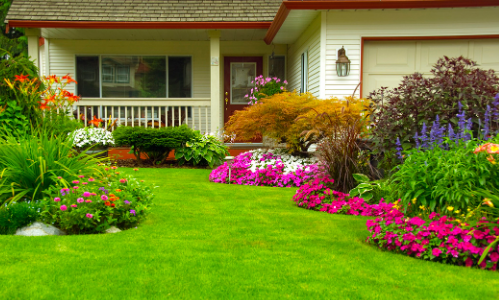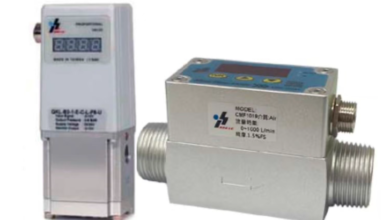DIY Lawn Care: Tips for a Lush Green Yard

Proper lawn care is not merely a matter of aesthetics; it plays a crucial role in the overall health of your outdoor environment. A well-maintained lawn contributes to the ecological balance by providing oxygen, improving air quality, and supporting biodiversity. Grass absorbs carbon dioxide and releases oxygen, making it an essential component of a healthy ecosystem.
Furthermore, a lush lawn can help reduce soil erosion, prevent runoff, and filter pollutants, thereby enhancing the quality of water that seeps into the ground. This ecological function underscores the importance of investing time and resources into proper lawn care. Beyond environmental benefits, a well-kept lawn can significantly enhance the value of your property.
Curb appeal is a critical factor in real estate, and potential buyers often make snap judgments based on the condition of the yard. A vibrant, green lawn can create a welcoming atmosphere, making your home more attractive to visitors and prospective buyers alike. Additionally, a healthy lawn can serve as a recreational space for families, providing a safe area for children to play and for adults to relax.
Thus, proper lawn care is not just about maintaining grass; it is about fostering a healthy environment and enhancing the livability of your home.
Choosing the Right Grass for Your Yard
Selecting the appropriate type of grass for your yard is foundational to successful lawn care. The choice largely depends on your geographical location, climate, and the specific conditions of your yard, such as sunlight exposure and soil type. For instance, a turf supplier in Gympie may suggest cool-season grasses like Kentucky bluegrass and fescue thrive in northern climates where temperatures are moderate.
These grasses are well-suited for areas that experience cold winters and moderate summers, as they grow best during the cooler months of spring and fall. Conversely, warm-season grasses such as Bermuda and zoysia are ideal for southern regions where temperatures soar in summer. These grasses flourish in hot weather and are more drought-resistant than their cool-season counterparts.
When selecting grass, it is also essential to consider the intended use of the lawn. If the area will be subjected to heavy foot traffic, durable varieties like tall fescue or Bermuda grass may be more appropriate due to their resilience. Additionally, understanding your soil type—whether sandy, clayey, or loamy—can guide you in choosing grass that will thrive in your specific conditions.
Essential Lawn Care Tools and Equipment
To maintain a healthy lawn, having the right tools and equipment is paramount. A basic toolkit should include a reliable lawn mower, which is essential for keeping grass at an optimal height. Different types of mowers are available, including rotary mowers for larger areas and reel mowers for smaller lawns.
Each type has its advantages; for example, reel mowers provide a clean cut that promotes healthier grass growth but may require more effort to operate. In addition to a mower, other essential tools include a string trimmer for edging and trimming around flower beds and fences, as well as a rake for collecting leaves and debris. A quality garden hose or irrigation system is also vital for ensuring your lawn receives adequate water.
For those who prefer precision watering, a sprinkler system can be an excellent investment. Moreover, tools like aerators and dethatchers can help improve soil health by allowing air, water, and nutrients to penetrate deeper into the ground.
Mowing and Trimming Techniques for a Healthy Lawn
Mowing is one of the most critical aspects of lawn care that directly impacts grass health. The height at which you mow can significantly influence the growth patterns of your grass. Generally, it is advisable to follow the one-third rule: never cut more than one-third of the grass blade’s height at any one time.
This practice helps maintain healthy roots and encourages denser growth. For most grass types, maintaining a height of 2.5 to 4 inches is ideal; taller grass shades the soil, reducing weed growth and conserving moisture. Trimming is equally important for achieving a polished look while promoting lawn health.
Edging along sidewalks and flower beds not only enhances visual appeal but also prevents grass from encroaching into unwanted areas. When using a string trimmer, it’s essential to hold it at an angle that allows for an even cut without scalping the grass. Regular trimming helps maintain a uniform appearance and encourages lateral growth, which can lead to a thicker lawn over time.
Fertilizing and Watering Tips for a Lush Green Yard
Fertilization is vital for providing essential nutrients that promote healthy grass growth. Understanding the nutrient needs of your specific grass type is crucial; nitrogen is particularly important for promoting lush green growth, while phosphorus supports root development and potassium enhances overall plant health. Soil testing can provide valuable insights into nutrient deficiencies and pH levels, allowing you to tailor your fertilization strategy accordingly.
Watering practices also play a significant role in maintaining a vibrant lawn. Deep watering is preferable to frequent shallow watering; this encourages roots to grow deeper into the soil where moisture is more consistent. A general guideline is to aim for about one inch of water per week, either through rainfall or irrigation.
Early morning is the best time to water your lawn, as it minimizes evaporation losses and allows grass blades to dry before evening, reducing the risk of fungal diseases.
Dealing with Weeds and Pests in Your Lawn
Weeds can quickly become a nuisance in any lawn if not managed effectively. Identifying the types of weeds present in your yard is the first step toward effective control. Broadleaf weeds like dandelions can often be removed manually or treated with selective herbicides that target specific types without harming the grass.
Conversely, grassy weeds such as crabgrass may require pre-emergent herbicides applied in early spring before they germinate. Pest management is another critical aspect of maintaining a healthy lawn. Common pests such as grubs or chinch bugs can cause significant damage if left unchecked.
Regularly inspecting your lawn for signs of pest activity—such as brown patches or increased bird activity—can help you catch infestations early. Integrated pest management (IPM) strategies that combine cultural practices, biological controls, and targeted chemical treatments can effectively manage pest populations while minimizing environmental impact.
Aerating and Overseeding for a Fuller Lawn
Aeration is an essential practice that involves perforating the soil with holes to allow air, water, and nutrients to penetrate deeper into the root zone. This process alleviates soil compaction—a common issue in lawns that experience heavy foot traffic—and promotes healthier root development. Aeration is typically performed during the growing season when grass can recover quickly; for cool-season grasses, early spring or fall is ideal, while warm-season grasses benefit from aeration in late spring or early summer.
Overseeding complements aeration by introducing new grass seed into existing turf without tearing up the entire lawn. This practice helps fill in bare spots and improves overall density while enhancing disease resistance and drought tolerance. When overseeding, it’s crucial to choose a seed blend compatible with your existing grass type and to ensure proper seed-to-soil contact by lightly raking or aerating beforehand.
Seasonal Maintenance for a Beautiful Yard Throughout the Year
Seasonal maintenance such as replacing old paving is key to ensuring your lawn remains beautiful throughout the year. In spring, focus on cleaning up debris left over from winter while performing necessary aeration and overseeding tasks. Fertilization should also be prioritized during this time as grass begins its active growth phase.
Summer maintenance involves regular mowing and watering practices to combat heat stress while keeping an eye out for pests and diseases that may thrive in warmer temperatures. As fall approaches, it’s time to prepare your lawn for winter by applying a final round of fertilizer designed to strengthen roots before dormancy sets in. Winter care may seem minimal but includes protecting your lawn from heavy snow accumulation or ice damage by avoiding excessive foot traffic on frozen ground.
Additionally, planning ahead for spring by organizing tools and supplies ensures you’re ready to jump into action when warmer weather returns. By understanding these various aspects of lawn care—from choosing the right grass type to seasonal maintenance—you can cultivate a thriving outdoor space that enhances both your property’s value and your enjoyment of it throughout the year.




